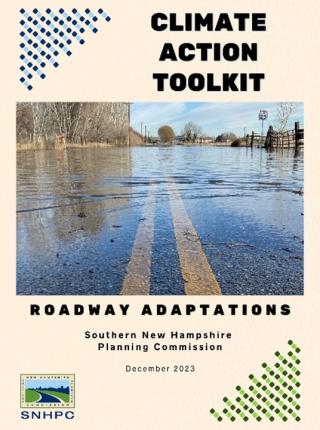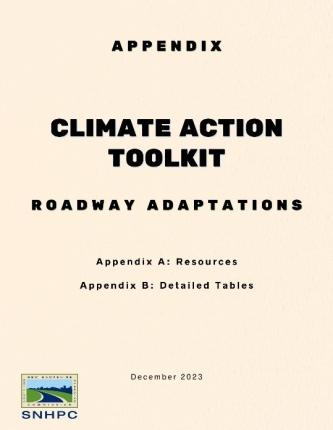Roadway Adaptation Toolkit
The functionality and reliability of the transportation network is a priority issue for every community, and the challenges of road washouts caused by flooding are well-known. For this reason, roadway adaptation provides a strategic entry point for bringing stakeholders together to address pressing concerns related to inland flooding, while laying the foundation for advancing broader, multi-faceted climate interventions.
Development of the Toolkit
SNHPC engaged a wide range of stakeholders and subject matter experts to develop a climate action toolkit focused on roadway adaptations, which is designed to help communities shift from analysis into action in order to more effectively address roadway vulnerabilities. It builds upon a range of prior initiatives, including:
- A rigorous Regional Vulnerability Assessment completed in 2020, which systematically documented the vulnerability of the region’s stream crossings.
- A review of national, state, regional, and local roadway adaptation resources. (See Appendix A for details.)
- A breadth of expertise contributed by 40+ stakeholders who attended an inaugural regional climate workshop in April 2023.
Toolkit contents
Here is what can be found in each chapter:
Chapter 1. Temperature Check: State of the Region provides a high-level synopsis of climate data and trends, and identifies key opportunities to advance regional climate planning efforts.
Chapter 2. Technical Analysis: Corridor-level Vulnerability outlines metrics for assessing vulnerable stream crossings, and introduces a corridor-scale approach to analyzing roadway vulnerabilities and identifying adaptation priorities.
Chapter 3. Menu of Strategies: Roadway Adaptation distills a list of practical roadway adaptation strategies, along with project examples and practitioner quotes to illustrate potential implementation opportunities.
Chapter 4. Adaptation in Action connects insights from Chapters 1-3 with an understanding of the local planning context. It includes a case study of a specific corridor in the region, followed by a discussion of how asset management and regional transportation planning can be more responsive to climate concerns.
The Appendix provides additional resources, including a list of key publications that informed the development of the Toolkit, and expanded, community-specific tables from the Chapter 2 Technical Analysis.
Download documents below:
The full impact of this Toolkit will rely on the commitment of local and regional stakeholders to pursue collaborative action in the face of climate change. We encourage everyone to get involved in this work, whether you are a transportation or planning professional, a Town administrator, or a concerned resident. For more information on SNHPC’s climate planning initiatives, contact Suzanne Nienaber, Principal Planner, at snienaber@snhpc.org.



